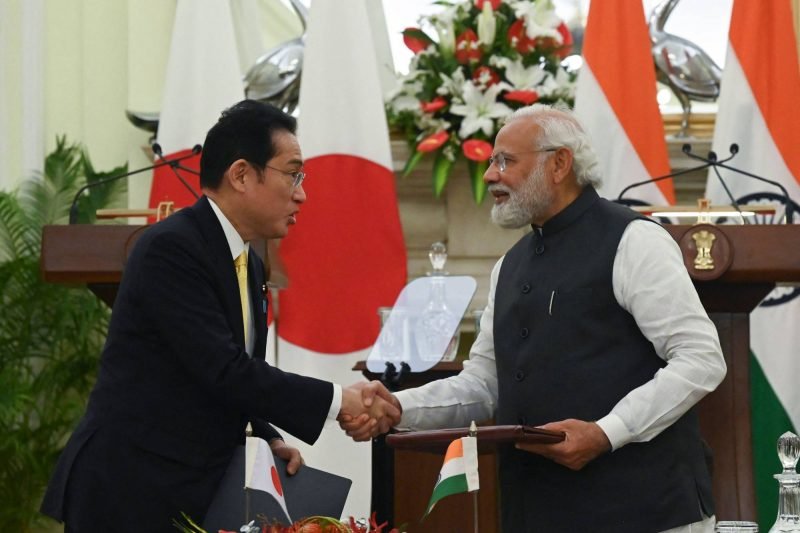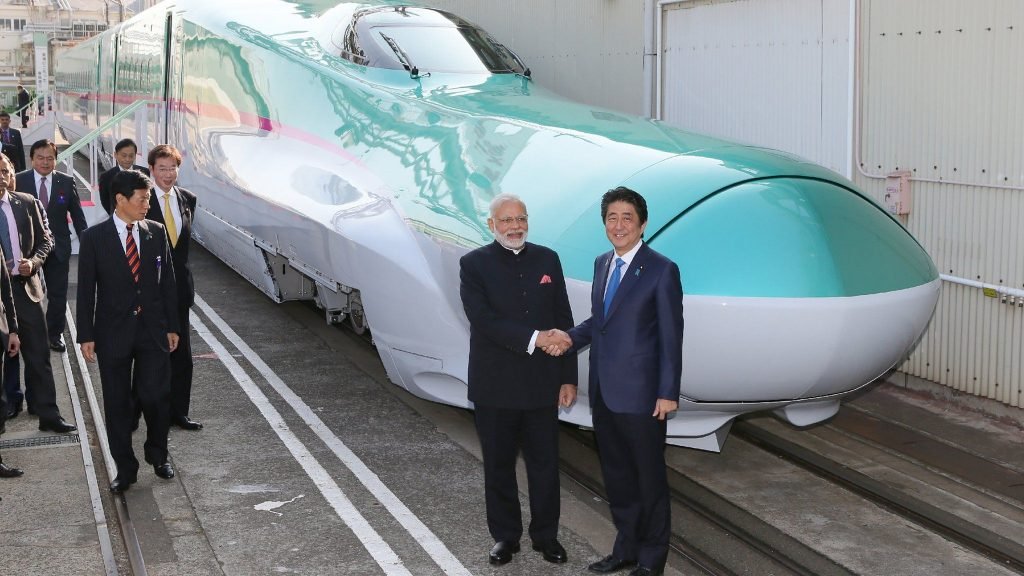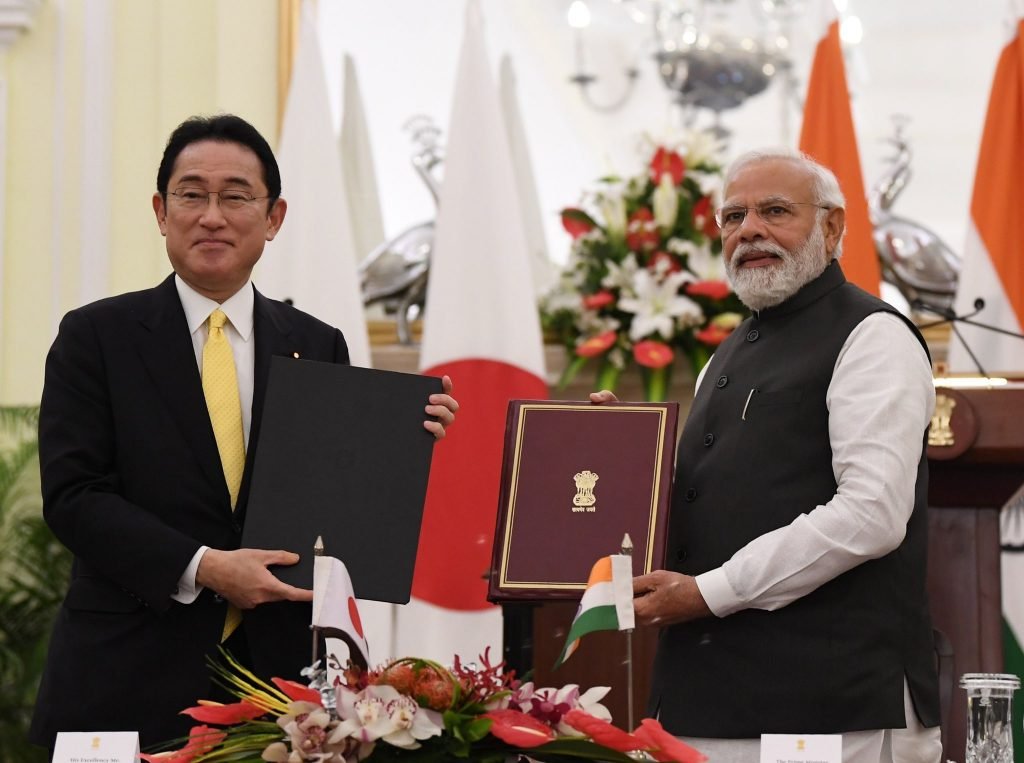Accrescent Technologies: India-Japan Growth Story

In the global evolution, science and accrescent technologies playing an eminent role which took the center stage in international relations with the advent of 21st century. It percolated from developed to developing countries as a key driver for economic growth and human development. In this wave of development, every region of the world took its share and been part of the supply chain for promoting traditional knowledge, indigenous technologies and boosting grassroot innovations. The Science & Technology policies started impacting the foreign policy and diplomacy of the countries considerably from post-Cold War.
India and Japan became part of this technological revolution in the year 2000 after the visit of the then Japanese Prime Minister Mr. Mori to India by establishment of Global Partnership between Japan & India. Indian Prime Minister Atal Bihari Vajpayee and Mr. Mori initiated co-operation in common avenues of in which R&D among the institutions, academia and industry. In 2006, then Indian Prime Minister Manmohan Singh further gives momentum to bilateral relations by elevating it to ‘Global & Strategic Partnership’ through Eight-fold initiative where the New Asian Era of cooperation started. One of the initiative to realize the full potential of India-Japan global partnership was Science and Technology Initiative (STI). It was clearly mentioned in the agreement that –
“The governments of Japan and India will make a special effort, in collaboration with the private sector, to encourage higher levels of investment by Japanese companies in India. They will strengthen technical cooperation to improve the competitiveness of Indian manufacturing industries … the joint task force in Information and Communication Technology (ICT) and ICT forum with IT databank will synergise the potential of both the countries.”
But with the time, the required growth in STI razed due to multiple glitchy factors and won’t reached the heights expected. The unidentified and non-targeted wholesome initiatives haphazard cooperation framework in multilateral and regional cooperation. Some very critical roadblocks were –
- Lack of projecting global research landscape in India’s scientific layout.
- Poor assessment of competencies and capabilities under national flagship programs.
- Use of diplomacy in India’s pursuit to influence global STI platforms.

The Leap Ahead
To provide it the necessary boost, the government under PM Narendra Modi’s administration drafted the new Science, Technology, Innovation Policy (STIP) in December 2020 which aims to bring about profound changes through short-term, medium-term and long-term mission mode projects by building a nurtured ecosystem that promotes research and innovation. The creation of robust ecosystem for evidence and stakeholder driven STI planning, information, evaluation, and policy research in India is on anvil. The idea is not only to reform the policy but to identify weaknesses of Indian STI ecosystem to make it globally competitive.
Dedicated International S&T Co-operation division under Department of Science & Technology mandated with responsibility to negotiate, conclude, and implement STI innovations. Not limited to this, it will exercise policy interventions at international forums in coordination with Ministry of External Affairs as well as Indian Missions abroad. It is important to highlight here that India has STI cooperation agreements with 83 countries globally which is gaining much needed impetus under India’s Act East Policy. Under this, India-Japan cooperation in technological aspects got much boost which is reflected majorly in biotech, nano-science, robotics, clean water, alternate source of energy, healthcare and hydrocarbon fuels sectors.
Japanese Story
Recently, Japan also drafted its new Science & Technology policy and economic security scheduled to put in ordinary Diet session in 2022. It is looking for more internationalized supply chain, infrastructure & products that are indispensable for national security and socio-economic activities often dependent on foreign countries. The three important pillars of this revamped policy are :-
- to strengthen supply chain
- developing private patent system, maintenance & protection of core infrastructure
- strengthening of science & technology infrastructure
The reasons behind giving much focus and importance to supply chains by Japan provides them comparative advantage over Chinese aggressive behavior in South & East China Sea. Also, it serve as a new resilient supply chain mechanism to inculcate ASEAN and BIMSTEC countries to further explore opportunities in Indo-Pacific. Japanese government will have opportunity to explore high tech trade in India through this novel initiative under ATAL Innovation Mission through tinkering labs. It has immense potential if nurtured at budding stages.
The Indistinguishables
India and Japan both are in the fray to secure their operational upper hand in the Asia where Chinese tech advancements are challenging them in mass production, global exports and economic security over the major supply chains in Indo-Pacific region. As a biggest technological cum manufacturing hub, Chinese S&T policies are hurting India and Japan in significant prospects. To cope up with this troublesome challenge, the alignment between the new policies of both the countries have to find commons which will support as well as reciprocate opportunities in one another’s land.
As of now, S&T policies in Indo-Japan bilateral relations addresses the technological challenges at academic and R&D levels only. The economic impetus of them in commercial and market operations till date is an unsolved puzzle for both of them. Both countries direly needs to make it as a tool of ‘economic statecraft’ aiming to strengthen competitiveness and establish economic security. The need of value-positive narrative among the trader’s community and organizations is only be pushed major projects alliances under G2G financial ODAs. One can not forgot that among the approved ODA assistance by PM Kishida for next 5 years stood at whooping amount of 5 billion Yen where the S&T is one among the top contenders in cooperation benchmarks.

In the course of this analysis, I found some commons where both countries are capable to resolve these roadblocks –
- Co-operation in priority areas like 5G expansion, blockchain and IoT must be customized under engagement strategies through renewed guidelines of concerned ministries.
- Sector/Issue focused, mission oriented, time bound identified deliverables has to be in place rather than MoU culture in G2G dealings. Legally binding agreements are the need of hour.
- Establishment of scientific facilities of cutting edge (academic, laboratories, production hubs and tinkering centers) of international standards in India under the training module of Japanese expertise, gained in over two decades globally.
- Market creation by easing public procurement norms; reviewing L1 criteria will bring ease to MSMEs and startups.
- Consortia led R&D will provide joint ownership to multiple stakeholders and lure their interests to collab as conglomerate.
- Accredition of emerging innovations; updation in product certification standards including IPR standardization is the key to stabilize accelerators and incubators.
The recent signing of Japanese ODA loan agreements between India and Japan marking 70th anniversary of establishment of diplomatic relations comes under SDG goals to support SDG 3- Good Health & Well being, SDG 9- Industry, Innovation & Infrastructure and SDG 13- Climate action. Yesterday, Japan International Cooperation Agency (JICA) signed loan agreements with Government of India to provide Japanese ODA loans of up to a total of 312.258 billion yen for seven selected projects. These all are based on next generation technologies to provide ease in connectivity and human development index.
Conclusion
The use of technological agreements till yet has been done to develop and grow in science only. Now on, it is must to build bridges using Technology as a tool of Diplomacy. The sentiment which it represents has the potential to serve as a catalyst for renewed needs, ideally one built upon the scientific principles of transparency, merit-based achievements and evidence-based decision making. One should be amazed by knowing that human interaction post-technological interventions bridged global gap three folds rapidly. It clearly shows that the India-Japan relations witnessing this global trend and are aligning more with the new reign of technology-based cooperation.
The New Asian Era has one central arm endure on STI cooperation which have potential to coordinate with all sectors for efficient, productive and manageable solutions. In my opinion, by focusing on co-innovation, co-promotion and co-creation; both countries will find capable solutions of common threats and coming challenges. Both countries are working on highest values and areas of science in joint missions like outer space, AI, nano-tech, and quantum technologies which is creating a strong base for future cooperation in coming times.
India-Japan Growth Story is mounting, molding and developing on a new sphere of ‘Science Web’ in which the succession of earlier efforts are fulfilling their dreams. The only need of the hour is – expanding the base of technological arms in the mundane belts. Both the countries are exploring the waters which has infinite depth and are waiting to derive enormous results waiting in stratified layers. In the current scenario, collaboration, collaboration and only collaboration among institutes, agencies and government is indispensable for attaining higher notch in bilateral relations.


















